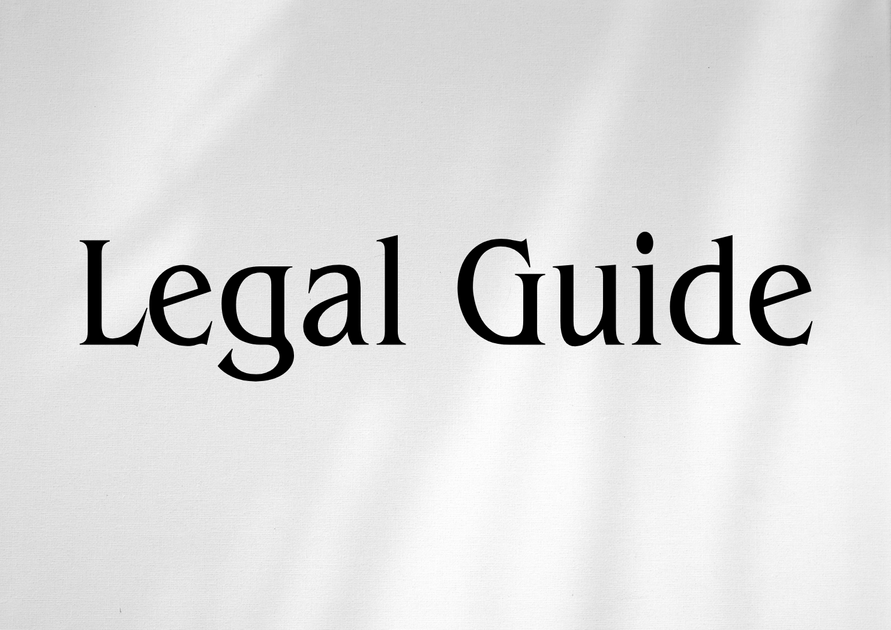Introduction: The Critical Role of Maintenance and Technical Oversight in Saudi Aviation
The aviation sector remains one of the most rigorously regulated industries worldwide, with safety and compliance at its core. In Saudi Arabia, there is heightened scrutiny regarding the standards of aircraft maintenance and technical oversight—areas that have seen robust legal reforms in response to rapid sectoral growth and increasing international engagements. For UAE-based stakeholders, understanding the evolving Saudi regulatory environment on aviation maintenance is essential, not only for aligning cross-border operations and investments but also for mitigating risk in an increasingly interconnected Gulf market.
Saudi Arabia’s latest legal reforms in aviation safety, particularly those promulgated under the auspices of the General Authority of Civil Aviation (GACA), are highly relevant for UAE airlines, maintenance, repair and overhaul (MRO) operators, HR leaders and legal practitioners. These new requirements reflect global best practices and complement comparable UAE aviation rules. The updated frameworks present both opportunities and compliance challenges for businesses navigating the GCC’s dynamic legal landscape, especially regarding technical oversight, safety management and maintenance record-keeping. This article offers a consultancy-grade analysis of the legal regime governing maintenance and technical oversight in the Saudi aviation sector, drawing actionable insights for UAE-based operators engaged in Saudi or cross-border aviation activities.
The following sections systematically examine Saudi aviation regulations, legal updates, compliance obligations, comparative analysis with UAE laws, and real-world consultancy implications.
Table of Contents
- Overview of the Legal Framework
- Key Maintenance and Technical Oversight Reforms in Saudi Aviation
- Detailed Breakdown of Maintenance Laws and Regulations
- Comparative Analysis: Saudi versus UAE Aviation Maintenance Laws
- Real-World Application and Consultancy Insights
- Risks of Non-Compliance and Strategic Compliance Recommendations
- Case Study: Cross-Border Aviation Operations
- Conclusion and Forward-Looking Guidance
Overview of the Legal Framework
The Evolution of Saudi Aviation Law
Saudi Arabia’s aviation law is anchored by the Law of Civil Aviation (Royal Decree M/44 of 1426H), with executive regulations issued by GACA providing the operational backbone for maintenance requirements. Over recent years, GACA has issued a series of circulars and updated regulations—such as the GACAR Part 43 (Maintenance, Preventive Maintenance, Rebuilding, and Alteration) and Part 145 (Approved Maintenance Organizations)—in line with ICAO standards and reflecting global best practices. Strategic amendments made in 2023 and effective in 2024 have had a material impact on maintenance procedures, audits, documentation, and technical oversight obligations.
Key legal sources underpinning Saudi aviation maintenance oversight include:
- Law of Civil Aviation (Royal Decree M/44)
- GACA Regulations (GACAR)—specifically, Parts 39, 43, 66, 145
- GACA Circulars and Safety Directives (latest updates in 2023–2024)
- International Civil Aviation Organization (ICAO) Annex 6 (Operations of Aircraft)
Application and Enforcement
All operators and maintenance organizations licensed within Saudi Arabia, as well as foreign operators flying into or through the Kingdom, are bound by these rules. Enforcement is carried out by GACA’s dedicated inspection and compliance units, with significant penalties for violations, including operational suspension, financial penalties and revocation of certificates.
Key Maintenance and Technical Oversight Reforms in Saudi Aviation
1. Enhanced Certification Requirements
Maintenance organizations (MROs) must now meet more stringent initial and renewal certification standards under GACAR Part 145. Requirements include expanded personnel qualifications, documented safety management systems (SMS), and evidence-based competency validation for technical staff. GACA-licensed organizations must implement robust auditing processes and maintain up-to-date training records.
2. Technical Documentation and Digital Record-Keeping
Adopting a digital-first approach, the 2023–2024 reforms mandate the creation and retention of electronic maintenance records for all aircraft under Saudi registry. These changes are in line with ICAO Annex 6 and facilitate enhanced oversight and traceability. Real-time data reporting and digital signatures are now required for maintenance release authorizations and airworthiness confirmations.
3. Expanded Scope of Inspections and Surveillance
GACA inspectors have been granted broader powers to conduct surprise audits, spot inspections, and audits of foreign operators. Regular oversight now includes both scheduled and unannounced reviews of safety protocols, SMS adherence, and ongoing staff competency.
4. Mandatory Adoption of Safety Management Systems (SMS)
GACA requires all certified MROs and operators to implement a Safety Management System that addresses risk identification, mitigation strategies, and continuous improvement mechanisms. Documentation and periodic reporting are strictly enforced, with annual SMS audits required as part of the compliance regimen.
5. Transparent Reporting and Incident Management
The obligation to report maintenance-related incidents, technical delays, or near-misses has been expanded. Incident reporting must now be both timely and electronically filed, increasing regulatory visibility and fostering a culture of transparency.
Detailed Breakdown of Maintenance Laws and Regulations
GACAR Part 43: Maintenance Standards and Preventive Maintenance
Part 43 sets forth the detailed maintenance regimes required for aircraft airworthiness. Operators must ensure:
- Routine and scheduled maintenance is performed by GACA-licensed personnel or GACA-approved organizations.
- All repairs and alterations comply with manufacturer’s specifications and GACA Airworthiness Directives.
- Comprehensive records are generated and securely maintained for each action performed.
Part 43 stipulates both authorized personnel qualifications and the acceptance process for foreign MRO approvals. A key evolution in the new regulations is the explicit recognition of electronic and remote audits—modernizing supervision and aligning the Saudi regime with leading international practices.
GACAR Part 145: Oversight of Approved Maintenance Organizations
GACAR Part 145 governs the approval, ongoing monitoring, and accountability of maintenance organizations. Key compliance requirements include:
- Annual self-audits, in addition to GACA audits
- Mandatory reporting of deficiencies and documented rectification measures
- Continuous professional development and technical upskilling of personnel
Enforcement Mechanisms and Penalties
GACA’s enforcement matrix operates under a risk-based approach, with penalties structured according to the severity and recurrence of violations. Notable enforcement measures include:
- Immediate grounding of non-compliant aircraft
- Suspension or revocation of MRO approvals
- Graduated financial penalties (ranging from SAR 50,000 to SAR 1 million for major breaches)
- Referral for additional criminal or civil liability for gross negligence or intentional misrepresentation
Comparative Analysis: Saudi versus UAE Aviation Maintenance Laws
Saudi Arabia and the UAE both operate mature regulatory systems for aviation oversight, yet recent Saudi reforms introduce nuanced distinctions and convergence points. The UAE Civil Aviation Law (Federal Law No. 20 of 1991, as amended) and the regulations enforced by the General Civil Aviation Authority (GCAA) remain generally aligned with international standards but differ in digitalization and enforcement intensity.
| Aspect | Saudi Arabia (2024) | UAE |
|---|---|---|
| Regulatory Authority | GACA; GACAR | GCAA; UAE Civil Aviation Law |
| Certification of MROs | Expanded under Part 145 with digital audits | Standard audits, physical and periodic |
| Record-Keeping | Mandatory digital records, real-time reporting | Digital records encouraged; hybrid permitted |
| Penalty Framework | Graduated, SAR 50,000–1M+, immediate suspension powers | Variable, typically administrative penalties with review rights |
| SMS Implementation | Mandatory, audited annually by GACA | Strongly encouraged, periodic reviews |
| Incident Reporting | Electronic, within fixed timelines | Mandatory, less specific on format |
Key Consultancy Insight
UAE-based operators must be acutely aware of these differential controls, especially when participating in joint ventures, code-sharing, or operating GCC-wide fleets. Harmonization of record-keeping, SMS integration, and upskilling for compliance with both regimes is paramount to mitigate operational risk and ensure seamless regulatory acceptance.
Real-World Application and Consultancy Insights
Practical Implications for UAE Firms Operating in Saudi Arabia
For UAE airlines and MRO providers, entering or expanding in the Saudi aviation market necessitates proactive compliance alignment:
- Pre-Entry Audit: Conduct a gap analysis of existing maintenance procedures against GACA’s latest requirements—especially in digital documentation and SMS frameworks.
- Personnel Certification: Ensure technical staff have reciprocal recognition or dual certification (GCAA and GACA), with at least one staff member trained on each regulatory regime.
- Record Management Update: Migrate or adapt record-keeping systems for full digital traceability to meet Saudi standards.
Example: Hypothetical Cross-Border Maintenance
A UAE-based MRO is contracted by a Saudi-registered airline for heavy maintenance checks on an Airbus A320 fleet. The MRO must:
- Certify that all carried-out work is traceable electronically, with digital sign-offs recorded in both English and Arabic.
- Comply with both GCAA and GACA audit protocols, retaining full documentation for possible GACA audits in Riyadh or Dammam.
- Report any incident or discrepancy directly to both authorities, utilizing digital submission platforms.
Risks of Non-Compliance and Strategic Compliance Recommendations
Primary Risks for Non-Compliance
- Operational Disruption: Immediate aircraft grounding disrupts schedules, leads to contractual penalties, and damages business reputation.
- Financial Liabilities: Significant fines, forfeiture of licenses and increased insurance premiums.
- Criminal and Civil Exposure: In cases of gross negligence or willful non-compliance, individuals may face personal liability, including criminal prosecution.
Strategic Recommendations for UAE Operators
- Invest in Integrated Compliance Programs: Develop policies that harmonize maintenance protocols and documentation across both markets.
- Leverage Digital Tools: Adopt software platforms that meet the most stringent regulatory standards (i.e., GACA’s digital-first requirements), enabling flexibility for multi-jurisdictional compliance.
- Train and Certify Multijurisdictional Teams: Support ongoing professional development for maintenance and compliance teams, prioritizing dual GCAA-GACA certification.
- Engage in Proactive Regulatory Dialogue: Establish communication channels with both Saudi GACA and UAE GCAA to ensure early identification of regulatory updates and maintain a consultative approach to compliance.
Case Study: Cross-Border Aviation Operations
Consider the case of a leading UAE airline initiating a joint venture with a Saudi-based carrier to operate new routes within the Kingdom. Early in the partnership, the UAE airline’s technical team encountered a surprise GACA audit that identified deficiencies in digital record-keeping and incident reporting formats, resulting in temporary grounding of two aircraft and a SAR 200,000 fine.
Following this, the UAE airline implemented a comprehensive compliance regime migration:
- Immediate overhaul of maintenance records to meet GACA’s digital documentation standards
- Cross-certification of maintenance staff
- Formal adoption of a GACA-compliant SMS, subject to annual reviews by both partners
This example illustrates both the risks of underestimating Saudi regulatory rigor and the value of rapid, harmonized compliance solutions. Proactive alignment, led by experienced legal counsel and technical compliance experts, directly mitigates regulatory and commercial risks.
Conclusion and Forward-Looking Guidance
Saudi Arabia’s aviation sector is fast evolving, with maintenance and technical oversight reforms reflecting a commitment to global standards, digital transformation, and regulatory transparency. For UAE-based operators, legal practitioners, and corporate leaders, these changes necessitate a collective recalibration of compliance strategies, investment in digital record infrastructure, and robust staff training initiatives.
With ongoing cross-border aviation collaboration across the GCC, harmonization of regulatory standards and compliance practices is both a commercial necessity and a safeguard against operational risk. The future of aviation compliance in the region will be defined by the pace at which organizations can adapt to rapid legal updates, technological advances, and the increasing scrutiny of regional authorities.
Best Practice Guidance: UAE businesses engaged in Saudi aviation must treat regulatory compliance as a continuous process—requiring active liaison with legal advisors, investment in staff development, and adoption of integrated digital solutions. By staying ahead of legal developments, UAE operators can secure their interests, minimize risk, and capitalize on the opportunities offered by a thriving Saudi aviation sector.
References
- General Authority of Civil Aviation (GACA): https://gaca.gov.sa
- Law of Civil Aviation (Saudi Royal Decree M/44)
- GACAR Part 43, 145 – Saudi Civil Aviation Regulations
- UAE GCAA: https://gcaa.gov.ae
- Federal Law No. 20 of 1991 (UAE Civil Aviation Law)



